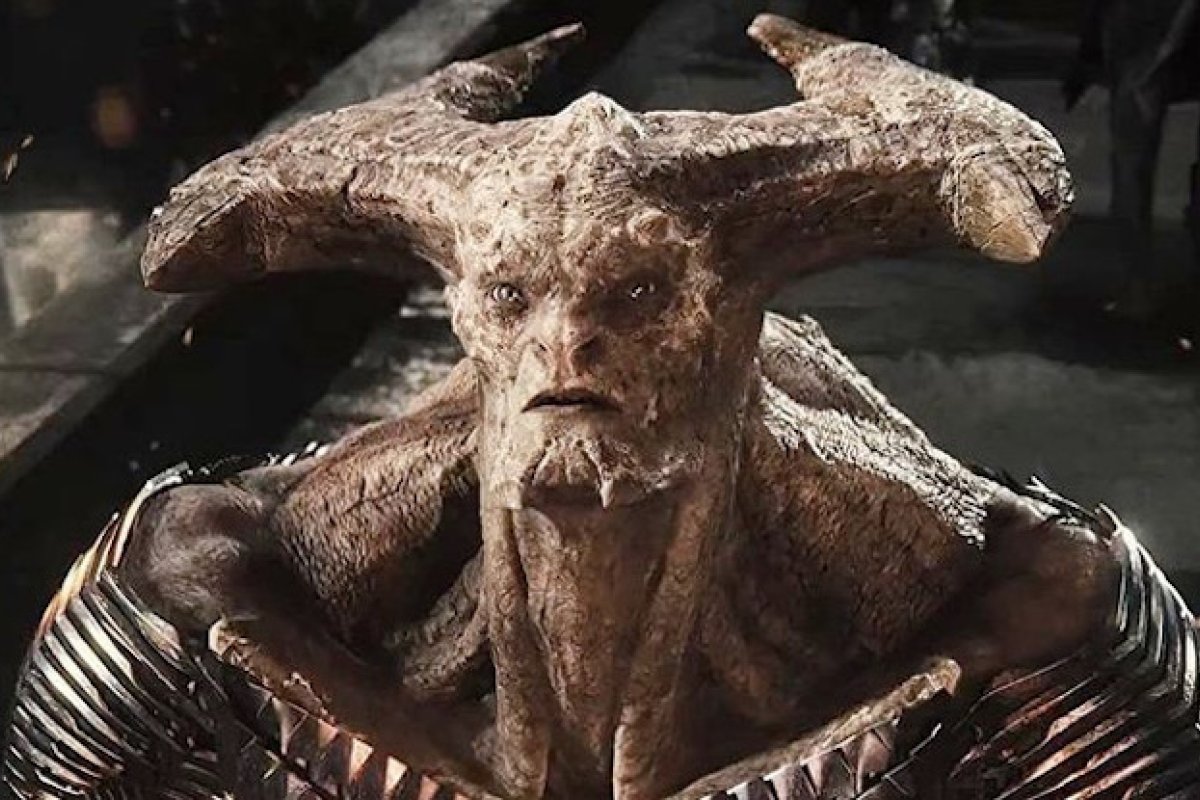
The Moral Emptiness of Zack Snyder's Justice League
Understanding what makes a movie villain compelling (or not), with a little help from Thomas Aquinas
Earlier this year, fans of the superhero genre were given Zack Snyder’s Justice League, a four-hour epic that hewed closer to the director’s original plan than the poorly-received 2017 film Justice League, which Snyder had to step away from during post-production.
In the wake of the 2017 release, a large movement emerged, mostly on the internet but occasionally also in the sky, calling for Warner Brothers to release the “Snyder Cut” of the film. The online movement was ultimately successful, and the director was given an additional $70 million for reshoots and new visual effects. After four years, viewers who complained about the 2017 version were finally given a chance to see what Justice League could have been had Snyder gotten the chance to execute his own vision. The answer, it turns out, is “bad.”
In this post, I will discuss one aspect of Zack Snyder’s Justice League that contributes to its overall lack of dramatic substance. While Snyder has demonstrated the ability to make good-looking people look good on screen, he and his collaborators have failed to tell a story with a coherent and convincing moral argument. That is to say, despite its epic scale, the movie feels empty. The moral philosophy of Thomas Aquinas can help us understand why.
The villain of the film is Steppenwolf, an alien with the body of the bad guy from Thor, the head of the bad guy from Thor III, and the vague world-ending motivation of the bad guy from Thor II. Steppenwolf says things like, “I have come to enlighten you to the Great Darkness™! I will bathe in your fear!” In the 2017 film, we are told that Steppenwolf was not interested in “talking about ethics” and that he “lived only to conquer.”
In the 2021 cut, viewers are given three new scenes of Steppenwolf talking to DeSaad, a minion of Darkseid, ruler of the fiery planet Apokolips. We learn that Steppenwolf betrayed Darkseid in the past (for reasons unknown). He now seeks “redemption” and to serve Darkseid once more (again, for reasons unknown). As penance, Steppenwolf must conquer at least fifty thousand worlds to get back into Darkseid’s good graces. Or rather, Darkseid’s evil graces.
Earth is next on Steppenwolf’s list, and to transform it into a copy of Apokolips, he needs to combine the three Motherboxes to form something called the Unity. If he succeeds, Earth will be turned into a hellish flamescape. Batman disapproves of this plan and enlists a team of superheroes to stop the Unity and keep Earth on a much more gradual path toward being covered in flames.
Despite what some commentators say, Steppenwolf is not given a compelling motivation in the new version. It’s hard for audiences to understand why Steppenwolf is so desperate to impress Darkseid or why Darkseid wants to conquer thousands of worlds. This lack of a compelling motivation matters.
A movie’s villain often plays a crucial role in the film’s moral argument. As screenwriting teacher John Truby notes, “Structurally the opponent always holds the key, because your hero learns through his opponent. It is only because the opponent is attacking the hero’s great weakness that the hero is forced to deal with it and grow” (88). In order for the villain to be compelling, the villain has to have a different moral outlook than the hero, and the drama that is played out is not only a matter of punches and kicks but of moral visions. Truby writes, “Great drama is not the product of individuals butting heads; it is the product of the values and ideas of the individuals going into battle” (391). Even in a rather simple hero story, the contest between hero and villain is not between good for good’s sake and evil for evil’s sake, but between three competing moral visions: the one the hero starts out with, the one the villain holds, and the one the hero discovers through the confrontation.
“In a well-drawn story,” Truby argues, “both hero and opponent believe they have chosen the correct path, and both have reasons for believing so. They are also both misguided, but in different ways” (90). “Opponent” here does not necessarily mean “villain,” and a hero story does not need to have a morally motivated villain in order to have a moral argument if the hero’s main opposing force is, for instance, societal prejudice (see Disney's Mulan [1998]). Truby’s point is that a compelling villain must have reasons for thinking that their actions are justified in order to set up the contrast of moral visions that give meaning to the film’s conflict. The trope of the villain monologue, though not strictly necessary, serves an important function in the moral argument of the film as a whole.
Truby’s screenwriting advice has a great deal in common with Thomas Aquinas’s account of evil. According to Aquinas, people who do bad things do them sub specie boni, under the aspect of the good. We do not choose evil for its own sake; rather, we do evil because we identify a good end and pursue it wrongly. In her book Thomas Aquinas on Moral Wrongdoing, Colleen McCluskey gives an example: “the aim of the adulterer is not to produce something evil (i.e., a bad act) but to produce pleasure, something he regards as good” (44). For Aquinas, all human wrongdoing involves an individual pursuing something they take to be good in a disordered, deluded, and destructive way. This does not remove culpability, nor does it mean everyone is simply misunderstood. But it does mean that movie villains, no matter how alien or outlandish, have to be seeking a recognizably good end if they are to be believable.
If evil is caricatured beyond recognition, it is difficult for a movie to promote a coherent vision of the good. This is what we find in Zack Snyder’s Justice League. The protagonists’ character arcs are sparse and incoherent. At best, we can say that the superheroes learn the value of teamwork, or that we all need to break the rules we’ve set for ourselves in order to prevail. The strongest thematic thread has to do with fathers sacrificing themselves for their children, perhaps in contrast to how Darkseid treats his “family.” But it’s difficult to identify the film’s central moral argument or to ascertain what motivates the characters and why viewers should care. As Sage Hyden suggests, this moral hollowness may reflect Snyder’s support of Ayn Rand’s Objectivism (support that includes trying to make another film adaptation of The Fountainhead). Unlike Aquinas, Rand extols the virtue of selfishness and views altruism as at odds with human flourishing. This comes across in Snyder’s films, which treat heroism as a matter of Aristotelian magnanimity more than compassion for others. From this perspective, it’s not clear what makes someone a villain or why anyone would choose to be a hero, and it’s difficult to evaluate different moral visions when they are in competition.
The result is a film that has a lot to say about Zack Snyder but very little to say about justice.
Image: HBO Max
Sightings is edited by Daniel Owings, a PhD Candidate in Theology at the Divinity School. Sign up here to receive Sightings via email. The views and opinions expressed in this article are those of the author and do not necessarily reflect the position of the Marty Center or its editor.


